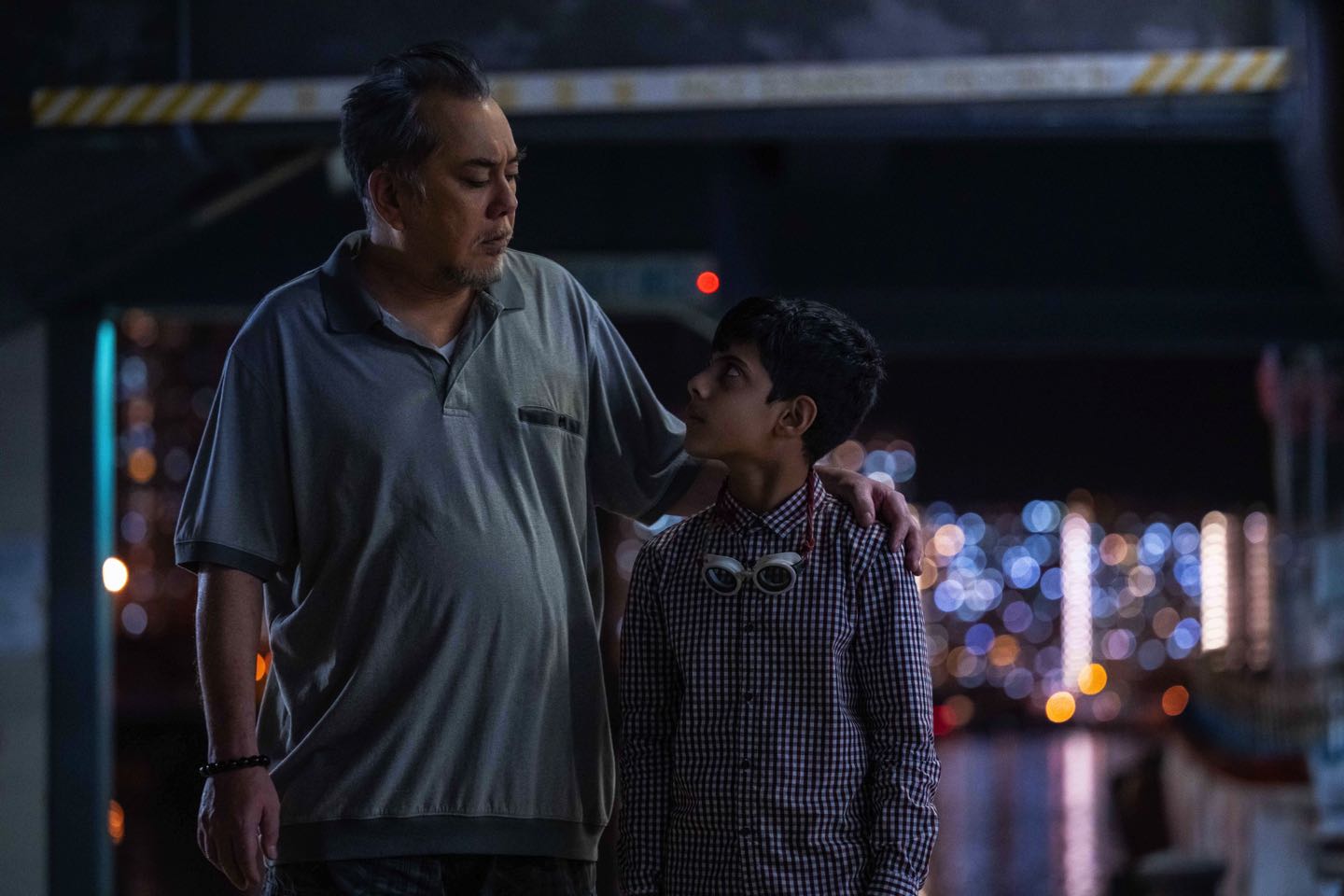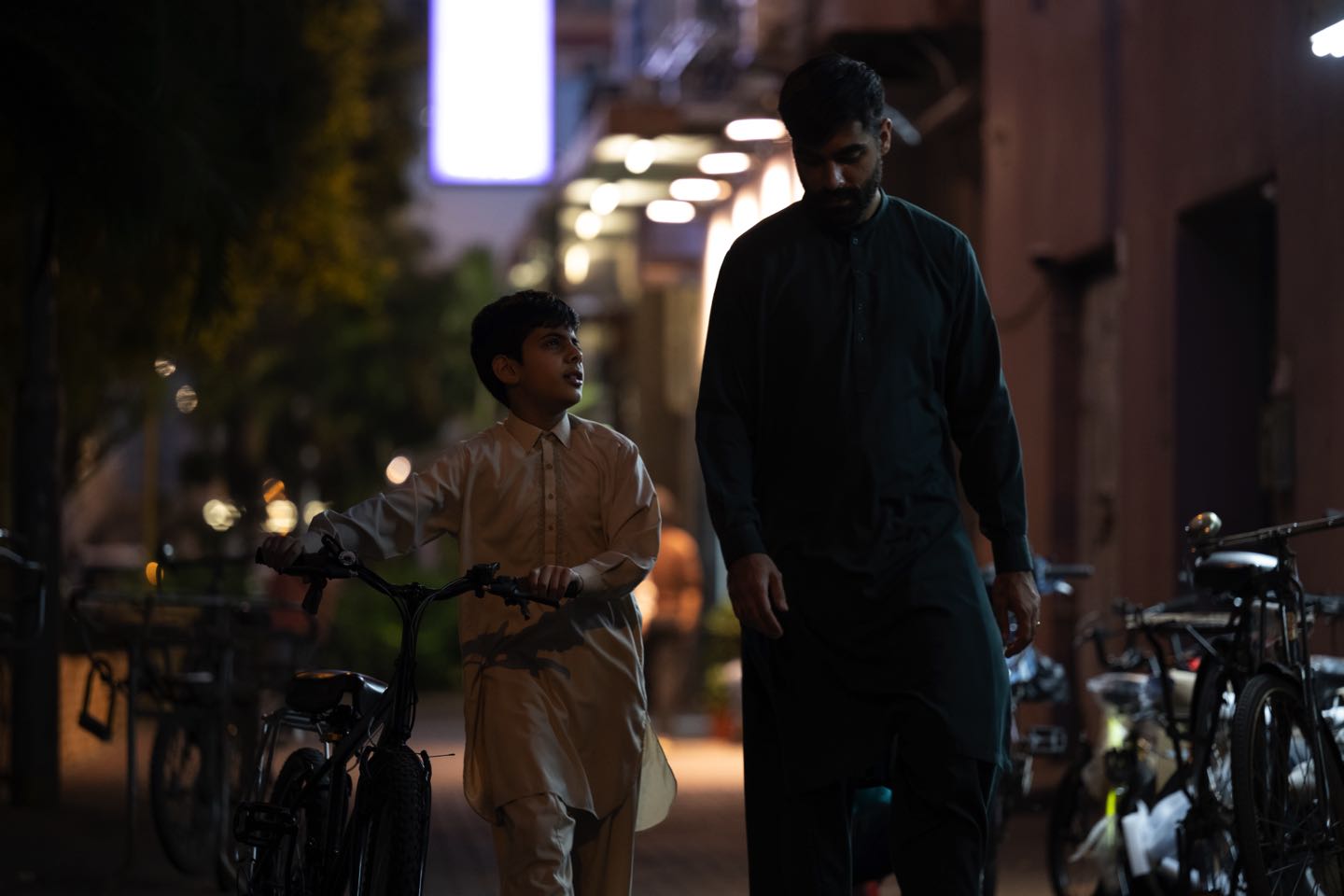
Sunny Side of the Street marks the debut of Hong Kong-based and Malaysia-born director Lau Kok-rai. It is one of the first films to show the plight of Hong Kong’s South Asian refugees, and one of the few Hong Kong movies to star ethnic minority actors in leading roles. While admirable in this regard, Sunny Side also shows how much room there is to improve when it comes to depicting ethnic minority Hongkongers on the silver screen. That said, stellar performances and realist visuals still make the film a worthwhile watch.
We’re not all that different

While Sunny Side centers on ethnic minority refugee issues, its primary protagonist is an ethnic Chinese taxi driver named Yat, played by Anthony Wong in a performance that recalls his role in Still Human (which also touched on non-refugee Hongkonger ethnic minority relations). One day, Yat gets into a car accident that causes the death of a Pakistani refugee named Ahmed. Feeling guilty, Yat forms an unlikely bond with Ahmed’s son, Hassan (Sahal Zaman).
Lau’s focus on ethnic minority refugees is admirable given how mainstream Hong Kong institutions often either ignore or demonize the community. Due to its relatively liberal visa policies and economic prosperity, Hong Kong has become a transit point for anywhere between 7,000 and 14,000 refugees. However, because the city is not a signatory to the 1951 United Nations Refugee Convention, it does not grant any refugees asylum, though it does offer asylum seekers the assurance that they will not be sent to countries that will persecute them. This puts refugees in a legal limbo. Hong Kong does not allow them the right to work or reside permanently, but does give them a small monthly stipend and food vouchers. Refugees have remained in this state for years as they wait to get resettled in other countries—which means that many of them, and their children, have become assimilated into Hong Kong society.
The Sunny Side of the Street depicts this reality in a generally accurate and humanistic manner. Hassan’s family wants to resettle to Canada, but they’ve been trapped in Hong Kong’s refugee limbo for almost ten years. This has led Hassan to assimilate into Hong Kong, speaking Cantonese with such fluency that he’s received a Chinese name at school. Despite all these efforts, Hassan and his family still lack a permanent home. Sunny Side accentuates all this precarity with a powerful metaphor; the family is so destitute that they cannot afford a pair of glasses for the nearsighted Hassan, leaving him to subsist with a pair of makeshift goggles. Perhaps as a way to appeal to ethnic Chinese Hongkongers, The Sunny Side of the Street also reveals how Yat himself was a “freedom swimmer” who fled from mainland China to Hong Kong during the 1970s—showing that the phenomena of refugees in Hong Kong is not recent, nor restricted to ethnic minorities.
Minority stories front and center?

When it comes to portraying ethnic minorities with humanism and authenticity, The Sunny Side of the Street represents a step forward. It offers a generally accurate portrayal of Pakistani Hongkonger culture, from its Urdu dialog to a traditional (albeit legally unrecognized) wedding and appropriate attire choices.
However, the film could’ve done better at countering stereotypes about refugees, and generally the more than 8% of Hong Kong’s population who are not Han Chinese. For example, Sunny Side shows Hassan as not interested in studies, disobedient of his mother, and a habitual thief—all the the young age of 10. While such characteristics might be authentic byproducts of Hassan’s harsh environment, the film could’ve imbued him with more redeeming qualities, and also explored the nuances behind Hassan’s behavior
Additionally, the film depicts a rather resentful dynamic between refugee and non-refugee ethnic minority communities. In reality, these communities can be rather close-knit and supportive to each other. As one prominent example, Hong Kong’s first ethnic minority social worker Jeffrey Andrews supports both non-refugee and refugee ethnic minorities through the NGO Christian Action.
It also seems a miss that Sunny Side primarily becomes a redemption story for Yat, instead of focusing on Hassan. Due to his guilt from hitting Hassan’s father, Yat wants to help Hassan escape Hong Kong illegally. This begs the question: will leaving Hong Kong illegally actually help Hassan in the long term, or simply condemn him to a life in limbo elsewhere? The film doesn’t substantially address these concerns. Perhaps focusing on Hassan himself would’ve created the room to do this, and advanced the plot in a way that seems less callous about Hassan’s future.
Heartfelt performances and visuals

This isn’t to say that The Sunny Side of the Street is bad from an artistic point of view. Anthony Wong’s performance as Yat is solid, and it’s no surprise that he won a Best Actor award at the 59th Golden Horse Awards for it. However, this role of “grumpy old man who bonds with ethnic minority character” is essentially what Wong played in Still Human as well, and doesn’t necessarily highlight his range as an actor.
It’s really newcomer Sahal Zaman’s nuanced performance as Hassan that brings The Sunny Side of the Street to life. In his first acting role, Zaman blends Hassan’s stubbornness with innocence, his curiosity with passion, and his dreaming with hope. He imbues Hassan with relatable characteristics of many young ethnic minorities in Hong Kong, whether refugees or not.
Cinematographer Leung Ming-kai’s visuals accentuate this performance, and are reminiscent of Hirokazu Kore-eda’s family-themed films. With shots of children playing with flattened soft drink cans, and Yat driving aimlessly in his taxi, Sunny Side communicates a sense of softness and intimacy, but also sadness.
By the end of The Sunny Side of the Street, one wonders how much the film will actually help the plight of refugees in Hong Kong. Through such acting and visuals, and its generally factual foundations, it certainly helps build some degree of empathy—even if imperfectly. Still, The Sunny Side of the Street shows that there’s truly a long way to go when it comes to depictions of ethnic minorities and refugees in Hong Kong cinema. But it’s a first step in the right direction.
• • •
The Sunny Side of the Street (Chinese: 白日青春)—Hong Kong. Dialog in Cantonese and Urdu. Directed by Lau Kok-rui. First released November 15, 2022 at the Taipei Golden Horse Film Festival. Running time 1hr 52 mins. Starring Anthony Wong, Sahal Zaman, Inderjeet Singh, Kiranjeet Gill, Sohail Saghir.
